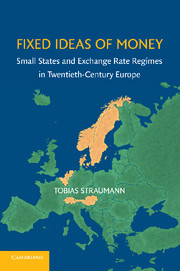Book contents
Five - Fixed versus Floating
Published online by Cambridge University Press: 06 July 2010
Summary
During the 1970s, small and large states reacted differently to the disintegration of the Bretton Woods system and the first attempt by the European Community (EC) to deepen monetary cooperation. From 1972 to 1976, the United Kingdom, Italy, and France left the Snake, the monetary arrangement of the EC, and switched to a floating regime. And Germany, whose strong currency was the anchor of the Snake, abandoned exchange-rate targeting and focused on control of the central bank money stock. By contrast, the overwhelming majority of small states maintained a peg, either by staying in the Snake, by adopting a currency basket, or by maintaining a deutsche mark (DM) peg (Table 5.1). Only one small state, Switzerland, abandoned the fixed-exchange-rate regime in the early 1970s, and it remained the only exception until the European Monetary System (EMS) crisis in 1992, when Norway and Sweden made the same regime shift. Thus not until the end of the twentieth century did a floating exchange rate become a normal option for small European states.
Why did most small states maintain a peg during the 1970s, whereas large countries chose to float? And why did Switzerland in 1973 and Norway and Sweden in 1992 make a regime shift toward floating? As to the first question, country size obviously played a role, but not exclusively, as the Swiss exception shows. The crucial question, then, is by what channel did country size exert its influence?
- Type
- Chapter
- Information
- Fixed Ideas of MoneySmall States and Exchange Rate Regimes in Twentieth-Century Europe, pp. 175 - 213Publisher: Cambridge University PressPrint publication year: 2010



